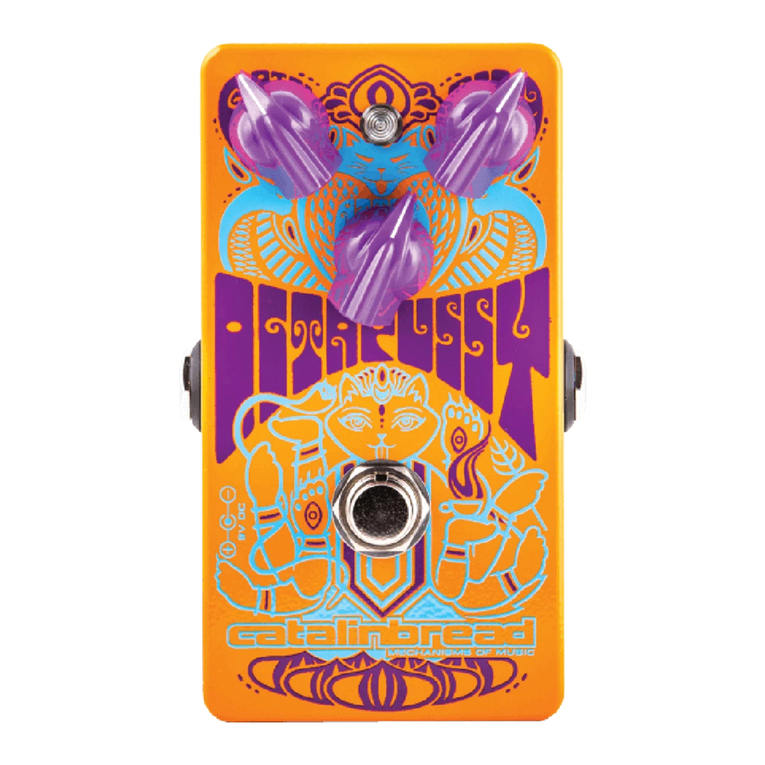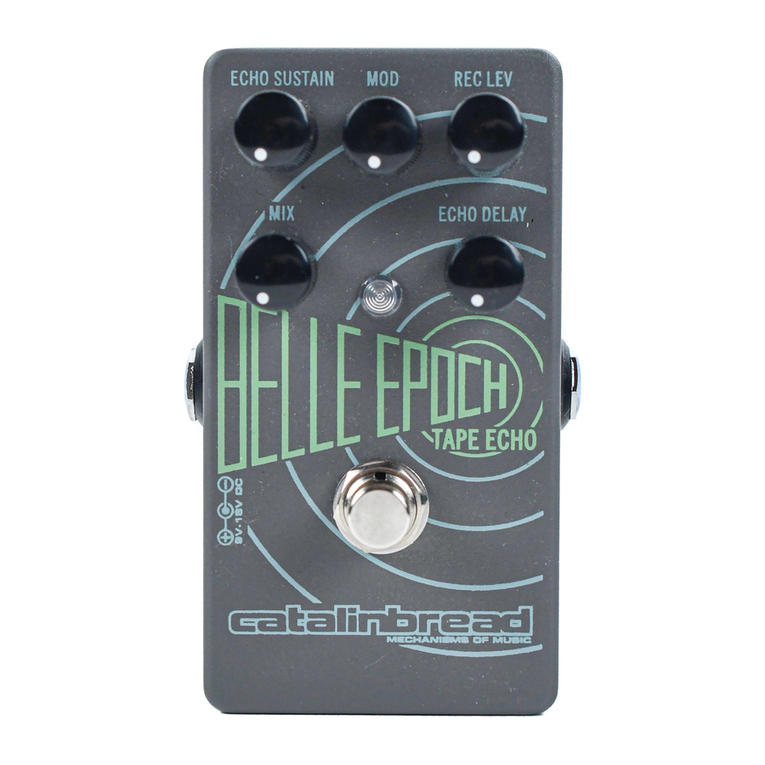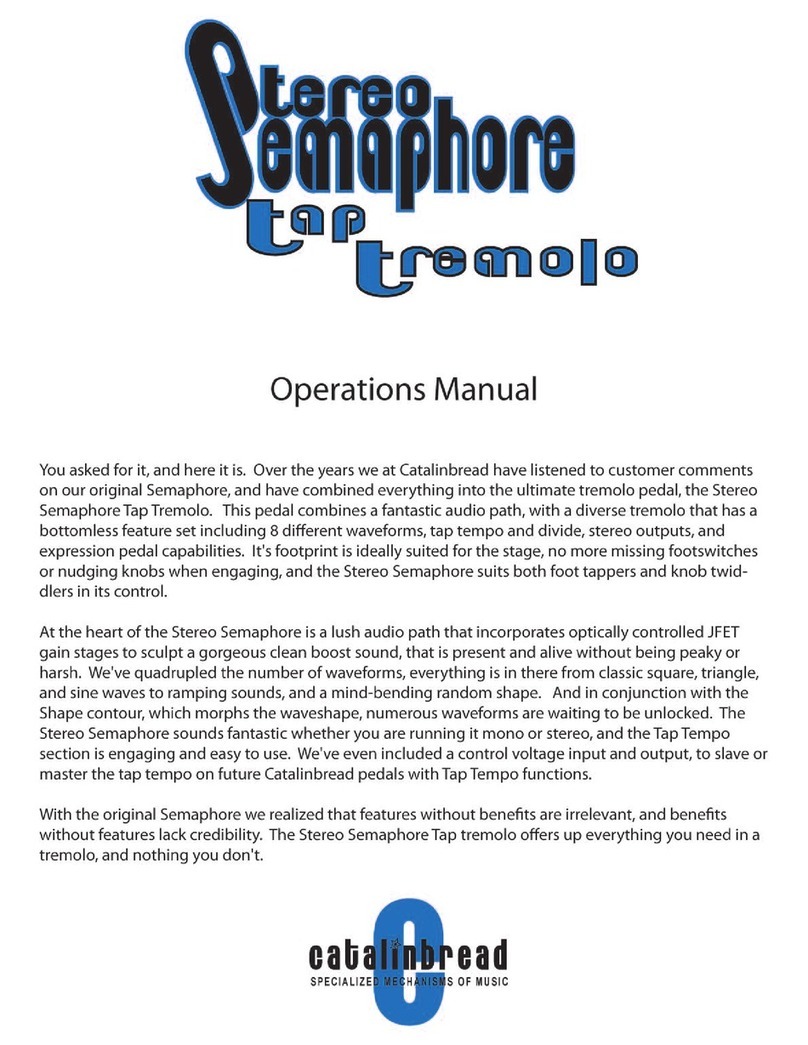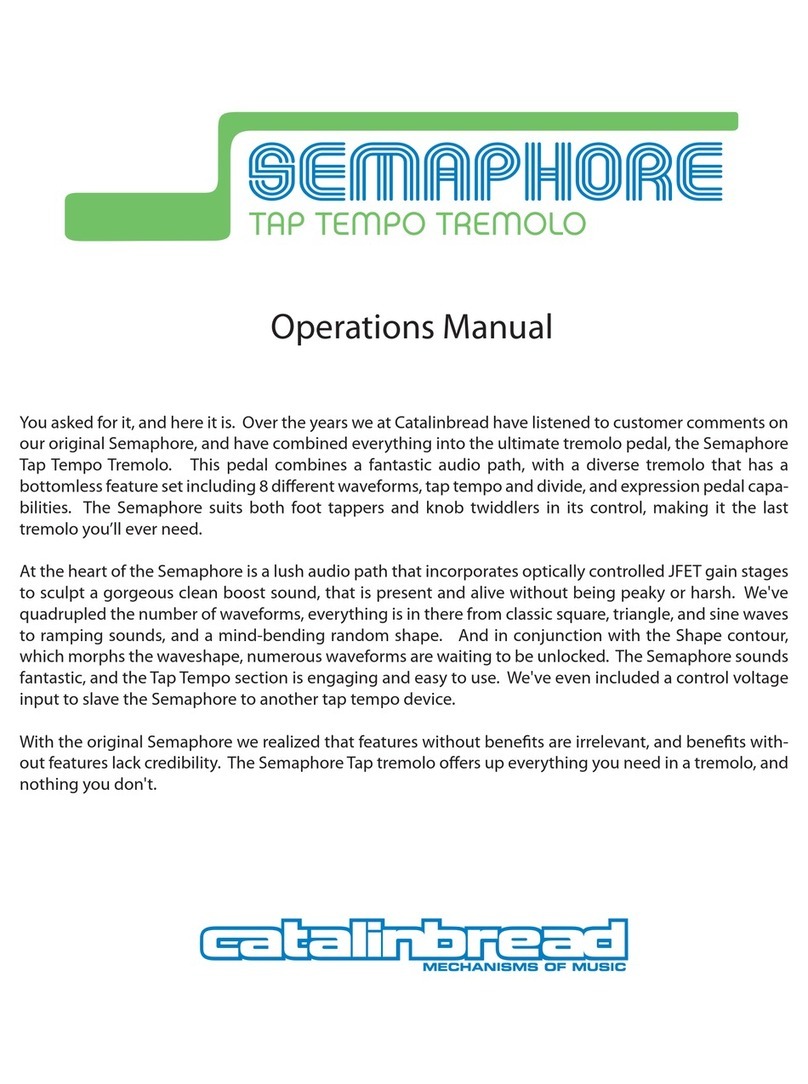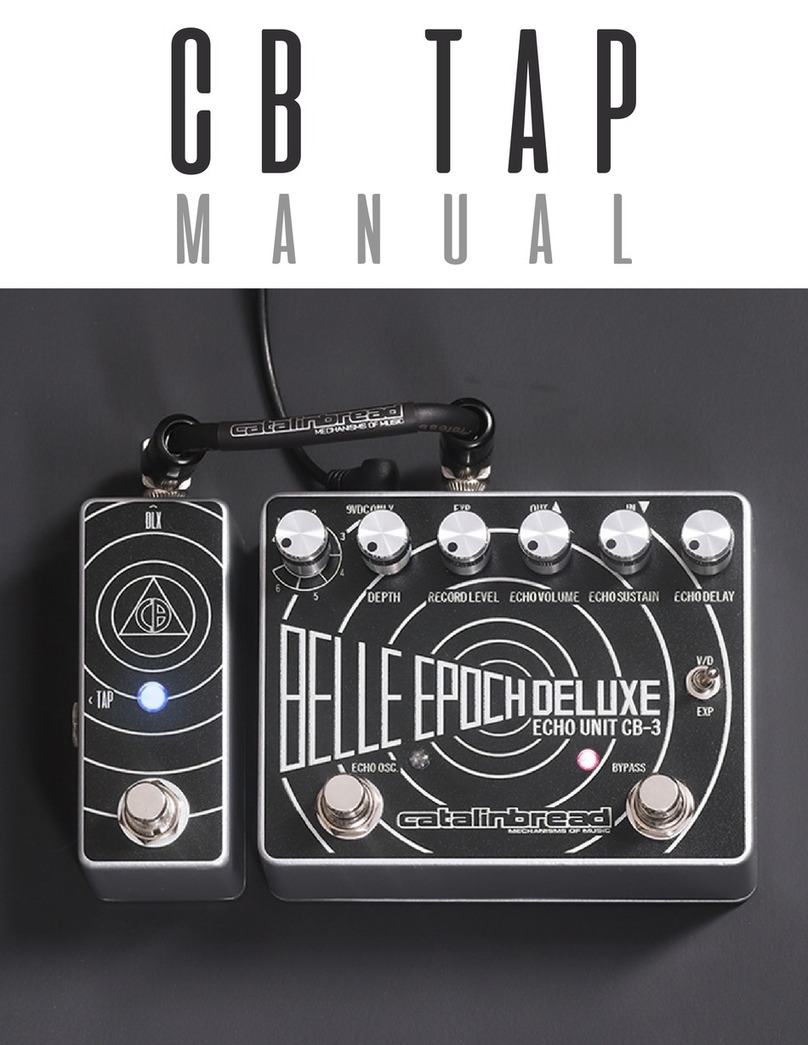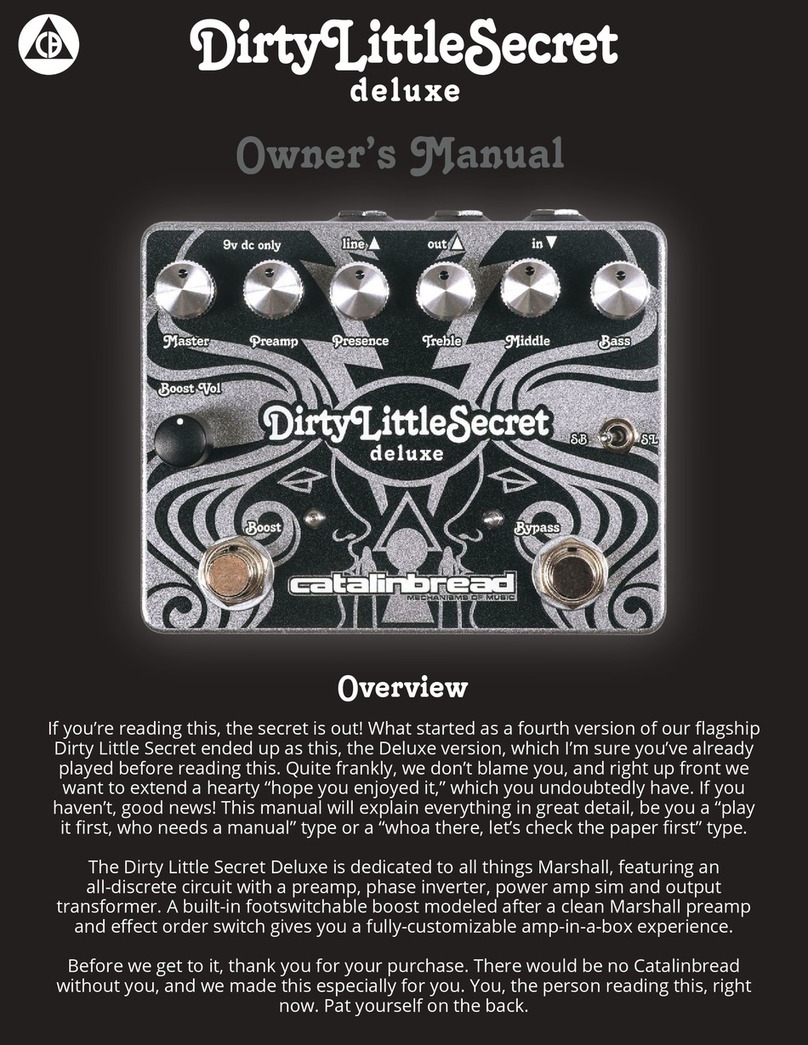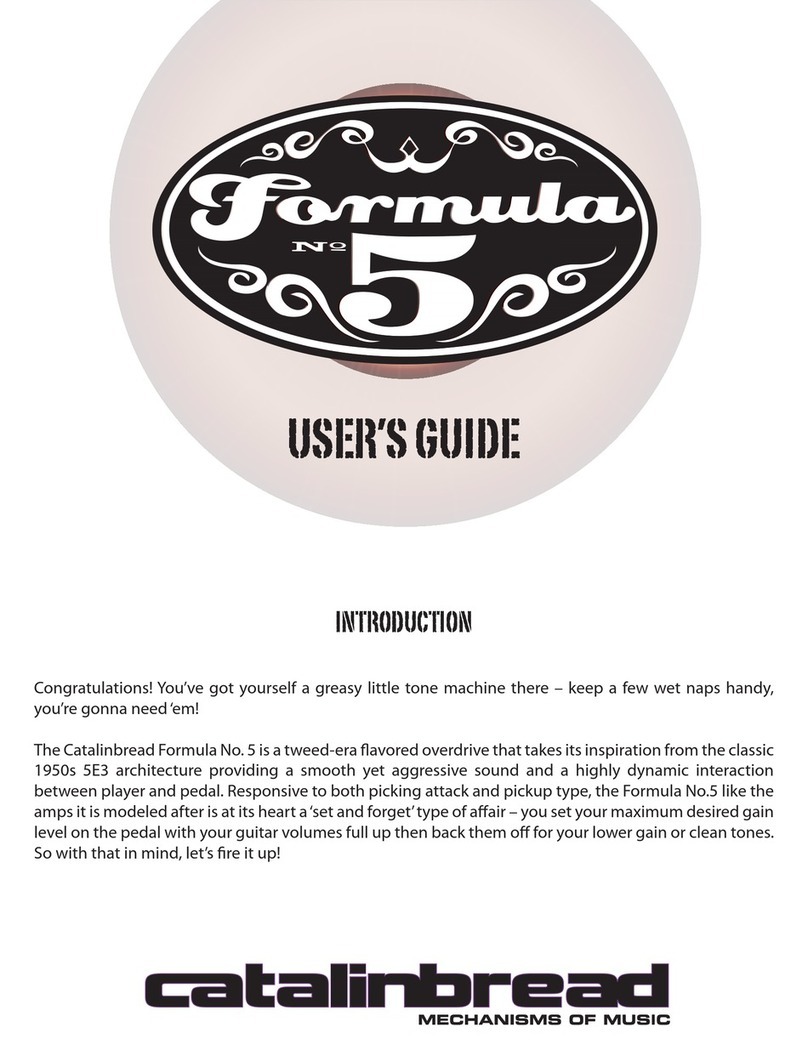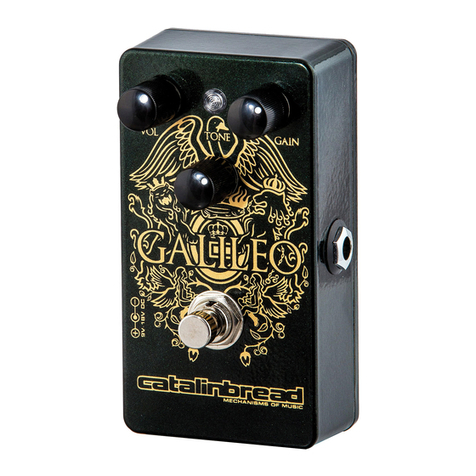
3. Insert the capacitors into their indicated positions and bend the leads out. Solder them in and trim off
the excess. The orientation of the non-electrolytic capacitors on the board does not matter. Capacitors
are technically measured in Farads, but we work with very small values, typically in picofarads (p, pF),
nanofarads (n, nF) and microfarads (u, uF). All nano- and microfarad parts will have the value printed
right on them. The ceramic capacitors are usually small and so they rely on a code, which is printed upon
them very small. On these, one three-digit number is printed. The first two numbers are, well, the first two
numbers of the value, and the third is the number of zeroes after, and the resulting number corresponds
to the value of the capacitor, in picofarads.
47p: “47” with either no third number or “0”
470p: “471”
4. Insert the transistors into their corresponding shapes on the board. Bend the leads outward, solder
them in and trim off the excess.
5. Insert the electrolytic capacitor into its position, (shorter leg is negative, it is also printed on the part
itself), bend leads outward, solder it in and trim off the excess.
6. Add the hardware, which includes the LED (the shorter of the two legs is negative), the footswitch
(make sure the flat footswitch lugs are parallel with the board’s bottom edge, not perpendicular), jacks,
DC jack and ground spring. Solder them in and trim off the nubs.
7. Solder the wires to the potentiometer lugs, then orient the other ends of the wires into the pads onto
the board. Match the value (printed on the pots) to the writing on the board and with the potentiometer
shafts pointing up, align them such that the lugs are pointing in the direction of the arrow pointing near
each. On this particular board, the outer two potentiometers should be pointing down, and the center is
pointing up.
At this point, you can try the pedal out without putting it in the enclosure. If you followed these
instructions exactly, it will work, and if it does, congratulations, put it in the enclosure and let it rip! If it
doesn’t work, it’s not a big deal! But some fixes are easier than others. If you own a desoldering pump,
you’re going to get some usage out of it.

